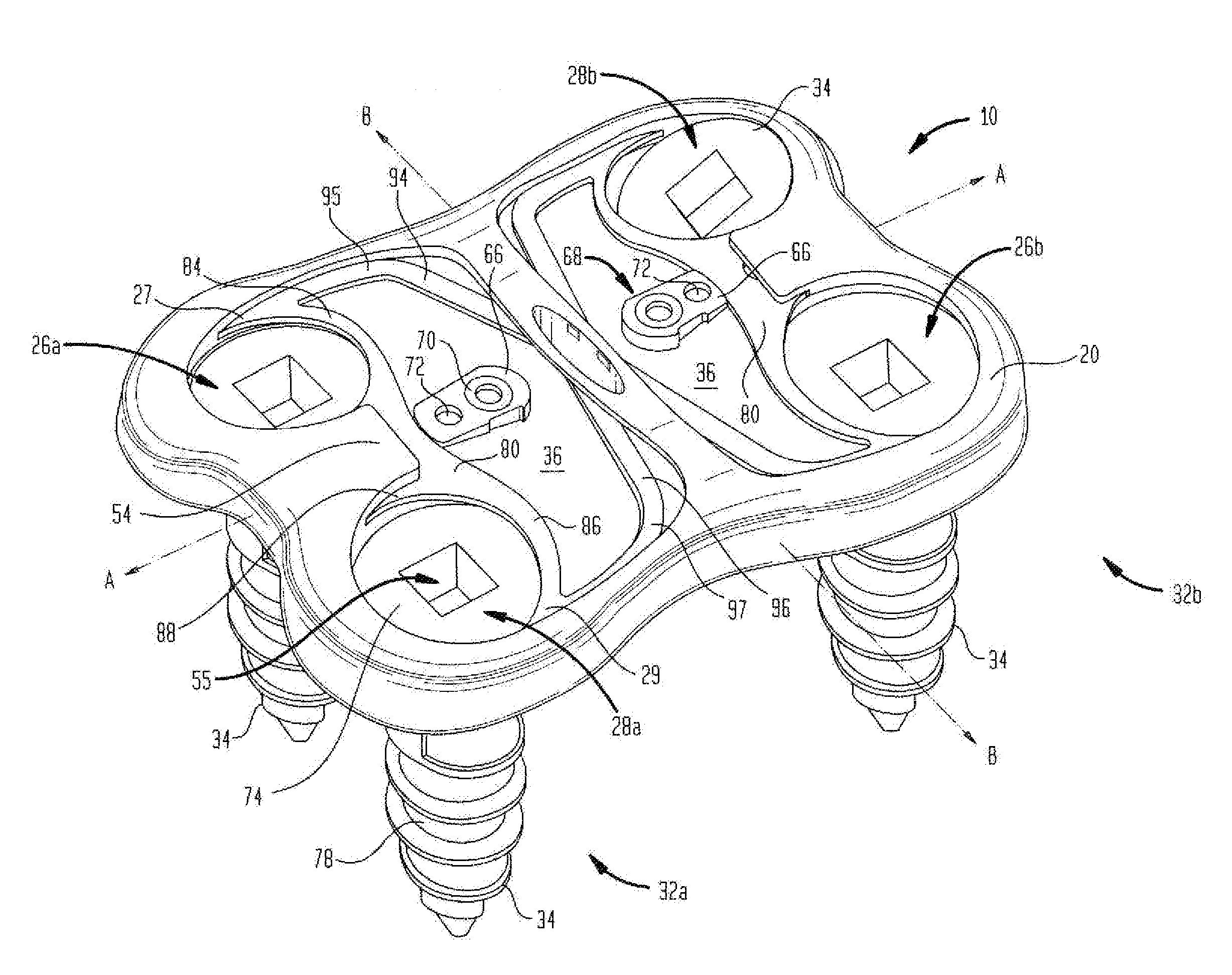Cervical plate with a feedback device for selective association with bone screw blocking mechanism
a feedback device and cervical bone plate technology, applied in the direction of ligaments, osteosynthesis devices, prostheses, etc., can solve problems such as loosening of bone screws
- Summary
- Abstract
- Description
- Claims
- Application Information
AI Technical Summary
Benefits of technology
Problems solved by technology
Method used
Image
Examples
Embodiment Construction
[0051]In accordance with an embodiment of the present invention, FIG. 1 depicts a one-level bone plate system 10 that may be used to stabilize or fuse vertebral bodies in the cervical or other region of the spine. System 10 is comprised of a bone plate 20, two screws 34, and blockers 80. In a more preferred embodiment, the system also includes a blocker fixation element, which may take the form of a cam 66, and a pin 70. Bone plate 20 includes a first pair 32a of screw holes 26a and 28a designed to receive bone screws 34, and likewise a second pair 32b of screw holes 26b and 28b.
[0052]It is to be understood that reference numerals pertaining to any one component are also descriptive of additional identical components of system 10, though such numerals may be omitted from the figures for clarity and ease of review. Furthermore, insofar as alternate embodiments are described, it is contemplated that a system may instead include more than one embodiment of a certain component.
[0053]Bo...
PUM
 Login to View More
Login to View More Abstract
Description
Claims
Application Information
 Login to View More
Login to View More - R&D
- Intellectual Property
- Life Sciences
- Materials
- Tech Scout
- Unparalleled Data Quality
- Higher Quality Content
- 60% Fewer Hallucinations
Browse by: Latest US Patents, China's latest patents, Technical Efficacy Thesaurus, Application Domain, Technology Topic, Popular Technical Reports.
© 2025 PatSnap. All rights reserved.Legal|Privacy policy|Modern Slavery Act Transparency Statement|Sitemap|About US| Contact US: help@patsnap.com



